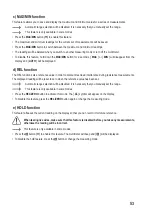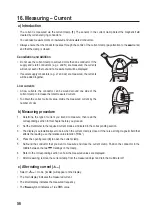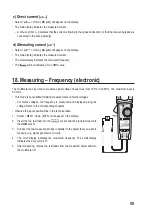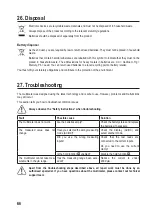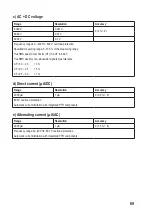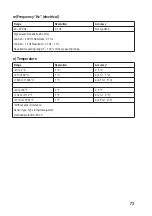
60
19. Measuring – Resistance
Make sure that all objects to be measured (including circuit components, circuits and component
parts) are disconnected and discharged.
1. Clean the measuring points if necessary. Make sure that the measuring points
you touch with the probe tips are free from dirt, oil, solder lacquer and other
similar substances. These substances may distort the measurement.
2. Select < > mode. [ M Ω ] will appear on the display. The main display shows
[ OL ].
3. Insert the red test lead into the
socket and the black test lead into the
COM socket.
4. Check the test leads by connecting the two test probes together.
- A resistance value of approx. 0 - 0.5 Ω should be shown (inherent resistance
of the test leads). The lead resistance in high-impedance measurements is
negligible.
- For low-impedance measurements, press the REL/ZERO button while
connecting the two test probes together to discount the inherent impedance
of the test leads. The display will be reset to 0. Automatic range selection will
be disabled and [ ] will appear on the display.
- The REL/ZERO button only works when a measured value is displayed. It
cannot be used when [ OL ] is displayed.
5. Connect the two test probes to the object that you want to measure.
6. The measurement (if not [ OL ]) will be indicated on the main display (provided
that the object you are measuring is not highly resistive or disconnected).
7. Wait until the reading stabilises.
- This may take a few seconds for resistances greater than 1 MΩ.
- [ OL ] (overload) indicates that the measuring range has been exceeded or that the circuit was disconnected.
8. After measuring, remove the test leads from the measured object and turn the multimeter off.








